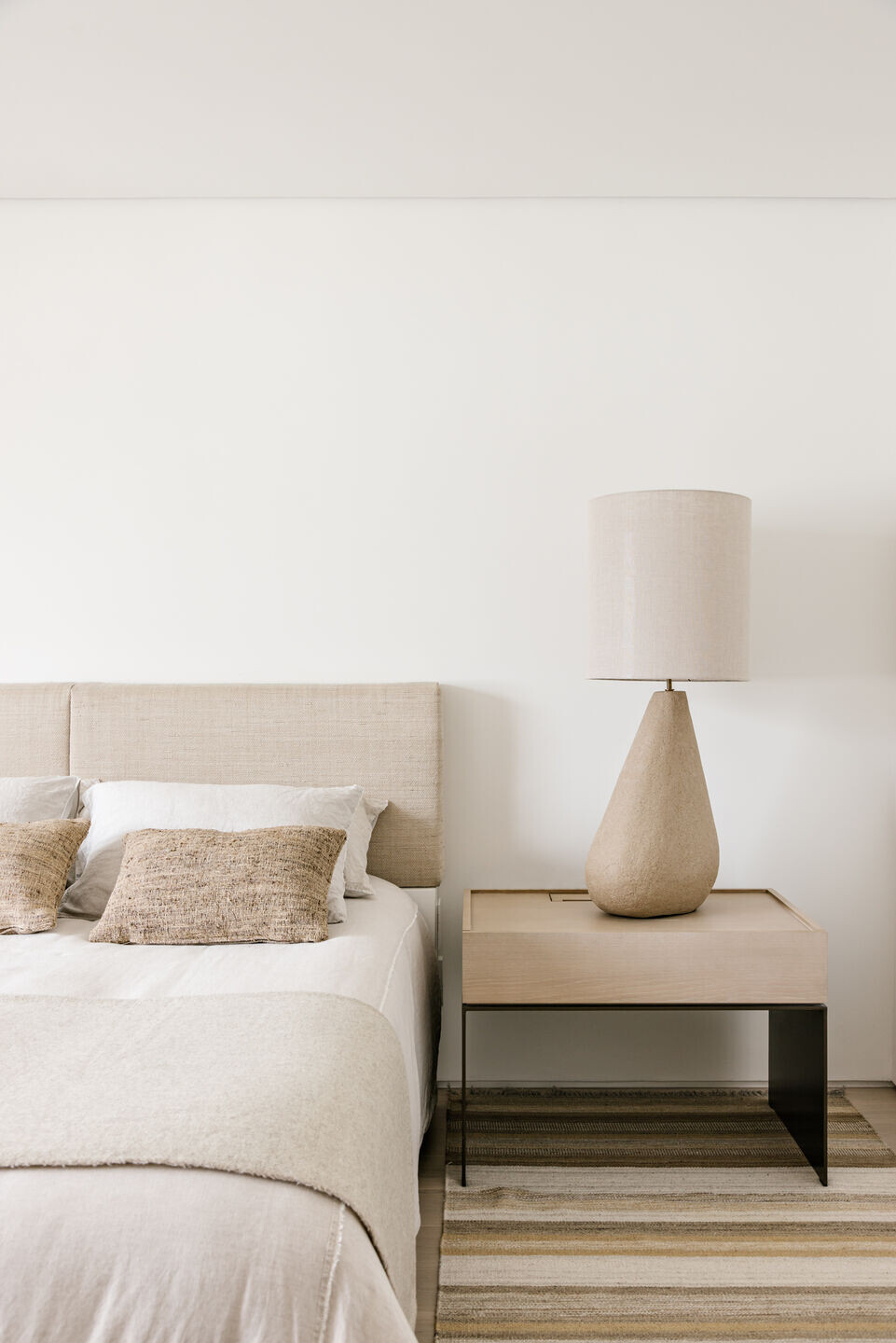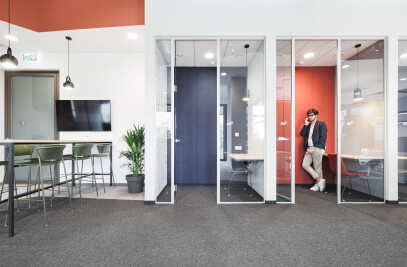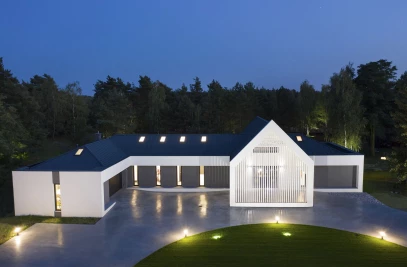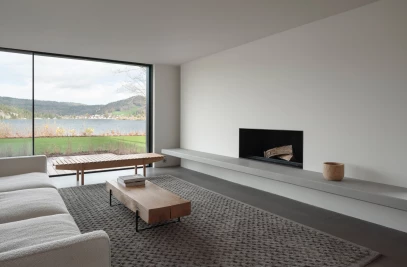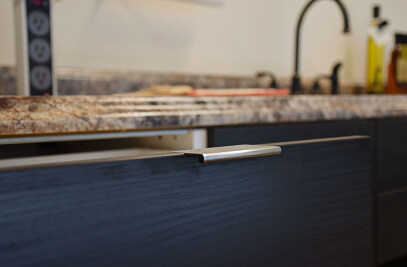The design of this apartment creates spaces in dialogue, integrating social areas, while following, at the request of the clients, a very specific aesthetic, inspired by New York lofts.

This approximation with the American aesthetic is achieved through darker joinery, which makes the apartment's composition less minimalist and takes advantage of the bookcase. Conceived as a solution to separate environments and to accommodate the couple's extensive library,the bookcase gains prominence in the project, which is distributed around it.
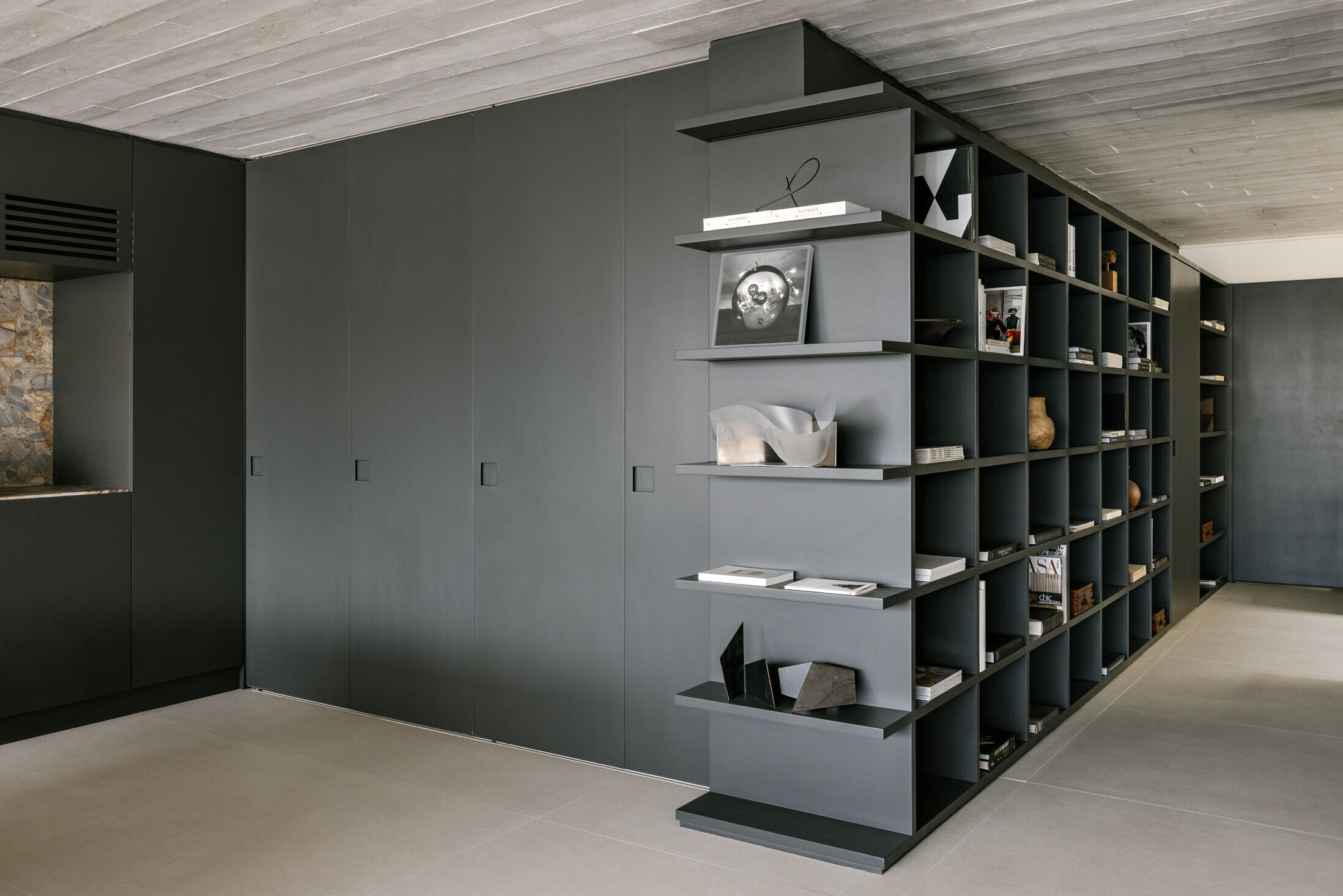
The living room, integrated with the dining room, can be connected to the kitchen through a floor-to-ceiling panel. The program also features a home theater, close to the social area and two suites, one of which is a master.

In order to guarantee balance to the final set of the project, the dark woodwork bookcase contrasts with the other finishes on the walls and floors of the apartment, all in light tones. Finally, meeting the need to adapt the space for the home office, the dining table 'transforms' into a workbench, and can have its end close to the frame moved, thus creating a separate area for work.

The interiors feature furniture signed by Jorge Zalszupin, such as the Anette armchair and Senior dining chairs; the Adobe 2 table, by Guilherme Wentz, the lamp by Sergio Rodrigues and the side table by Lucas Recchia. There are pieces designed by Arthur Casas, such as the Ettore side table, the Disco stool and the log dining/work table.
